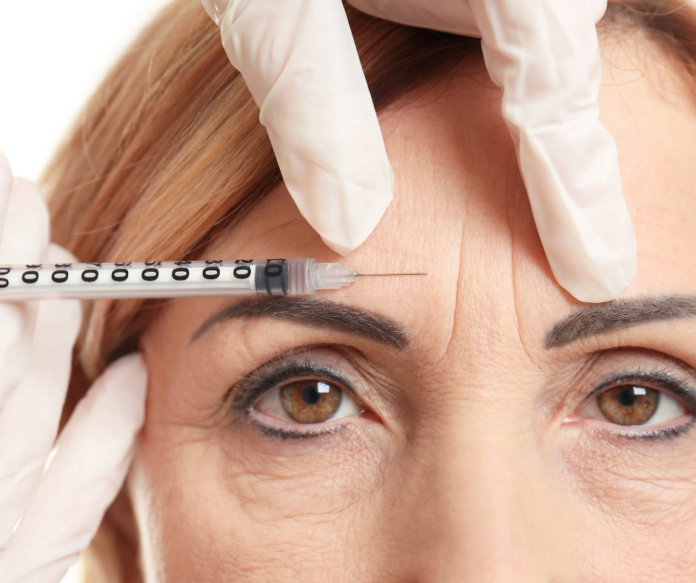
Botox Treatment for Forehead Wrinkles: Everything You Need to Know
As we age, our skin loses its elasticity, and wrinkles begin to appear. One of the most common areas where wrinkles develop is the forehead. If you’re considering a medspa service to address these wrinkles, Botox treatment for forehead wrinkles might be the perfect solution for you. In this article, we will answer some of the most common questions people have about Botox treatment for forehead wrinkles, providing specific answers and solutions to help you make an informed decision.
What is Botox?
Botox is a brand name for a toxin derived from the bacterium Clostridium botulinum. When injected in small amounts, it can temporarily paralyze muscles, which helps to reduce the appearance of wrinkles and fine lines. Botox is a popular cosmetic treatment used to address various concerns, including forehead wrinkles, crow’s feet, and frown lines. The [American Society of Plastic Surgeons](https://www.plasticsurgery.org/cosmetic-procedures/botulinum-toxin) provides more information on Botox and its uses.
How Does Botox Work for Forehead Wrinkles?
Botox works by blocking the nerve signals that cause muscle contractions. When injected into the muscles of the forehead, it prevents them from contracting, which in turn smooths out the overlying skin and reduces the appearance of wrinkles. The effects of Botox are temporary, typically lasting between three to six months. As the Botox wears off, the muscles regain their ability to contract, and the wrinkles may reappear. However, with regular treatments, the wrinkles may become less severe over time as the muscles become trained to relax.
Who is a Good Candidate for Botox Treatment?
Botox treatment for forehead wrinkles is suitable for individuals who have moderate to severe forehead lines and are in good overall health. It is essential to consult with a qualified medical professional to determine if Botox is the right treatment for you. They will assess your medical history, skin condition, and aesthetic goals to ensure that Botox is a safe and effective option.
It is important to note that Botox may not be suitable for individuals with certain medical conditions, such as neuromuscular disorders, or those who are pregnant or breastfeeding. Additionally, Botox may not be the best option for individuals with very deep wrinkles or significant skin sagging, as other treatments like dermal fillers or surgical procedures may be more appropriate.
What to Expect During a Botox Treatment
Before your Botox treatment, your medical professional will discuss your goals and expectations, as well as any potential risks and side effects. They will also examine your forehead to determine the appropriate injection sites and dosage.
During the treatment, your medical professional will use a fine needle to inject small amounts of Botox into the targeted muscles. The procedure is relatively quick, usually taking about 10 to 15 minutes. Most patients report minimal discomfort during the injections, often describing the sensation as a slight pinch or sting.
Recovery and Results
There is minimal downtime associated with Botox treatment for forehead wrinkles. Most patients can return to their normal activities immediately after the procedure. However, it is essential to follow your medical professional’s post-treatment instructions to ensure optimal results. These may include:
– Avoiding rubbing or massaging the treated area for at least 24 hours
– Avoiding strenuous exercise for 24 hours
– Keeping your head elevated for a few hours after the treatment
– Avoiding lying down for at least four hours after the treatment
Some patients may experience mild side effects, such as redness, swelling, or bruising at the injection sites. These side effects are typically temporary and resolve within a few days.
Results from Botox treatment for forehead wrinkles are not immediate. It usually takes about three to seven days for the full effects to become visible. As mentioned earlier, the results are temporary, and most patients require follow-up treatments every three to six months to maintain their desired appearance.
Potential Risks and Side Effects
Botox treatment for forehead wrinkles is generally considered safe when performed by a qualified medical professional. However, as with any medical procedure, there are potential risks and side effects. Some of the most common side effects include:
– Pain, swelling, or bruising at the injection sites
– Headache
– Flu-like symptoms
– Temporary drooping of the eyebrows or eyelids
More serious side effects are rare but can include:
– Difficulty swallowing or breathing
– Muscle weakness in areas away from the injection site
– Vision problems
It is crucial to discuss any concerns you may have with your medical professional before undergoing Botox treatment.
Choosing a Qualified Medical Professional
To ensure the best results and minimize potential risks, it is essential to choose a qualified medical professional to perform your Botox treatment. Look for a provider who is experienced in administering Botox injections and has a thorough understanding of facial anatomy. You can also ask for before-and-after photos of their previous patients to get a better idea of their expertise.
In Summary: Botox treatment for forehead wrinkles
Botox treatment for forehead wrinkles is a popular and effective medspa service that can help you achieve a smoother, more youthful appearance. By understanding the procedure, potential risks, and the importance of choosing a qualified medical professional, you can make an informed decision about whether Botox is the right solution for you. Remember to consult with a medical professional to discuss your specific concerns and goals, and to determine if Botox treatment is the best option for addressing your forehead wrinkles.



